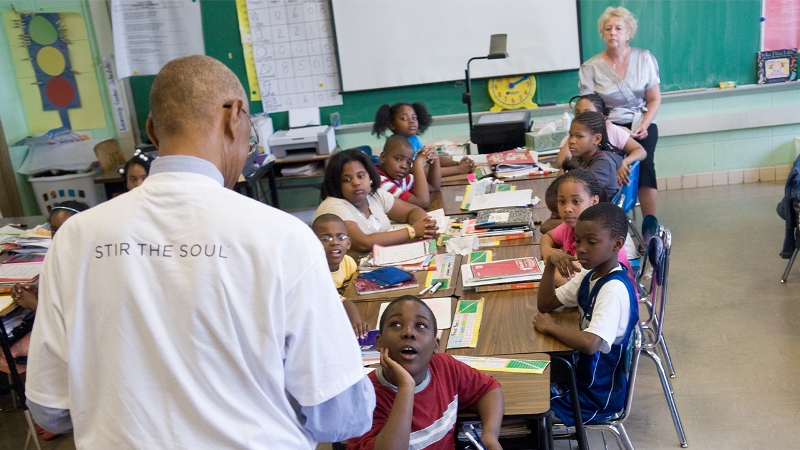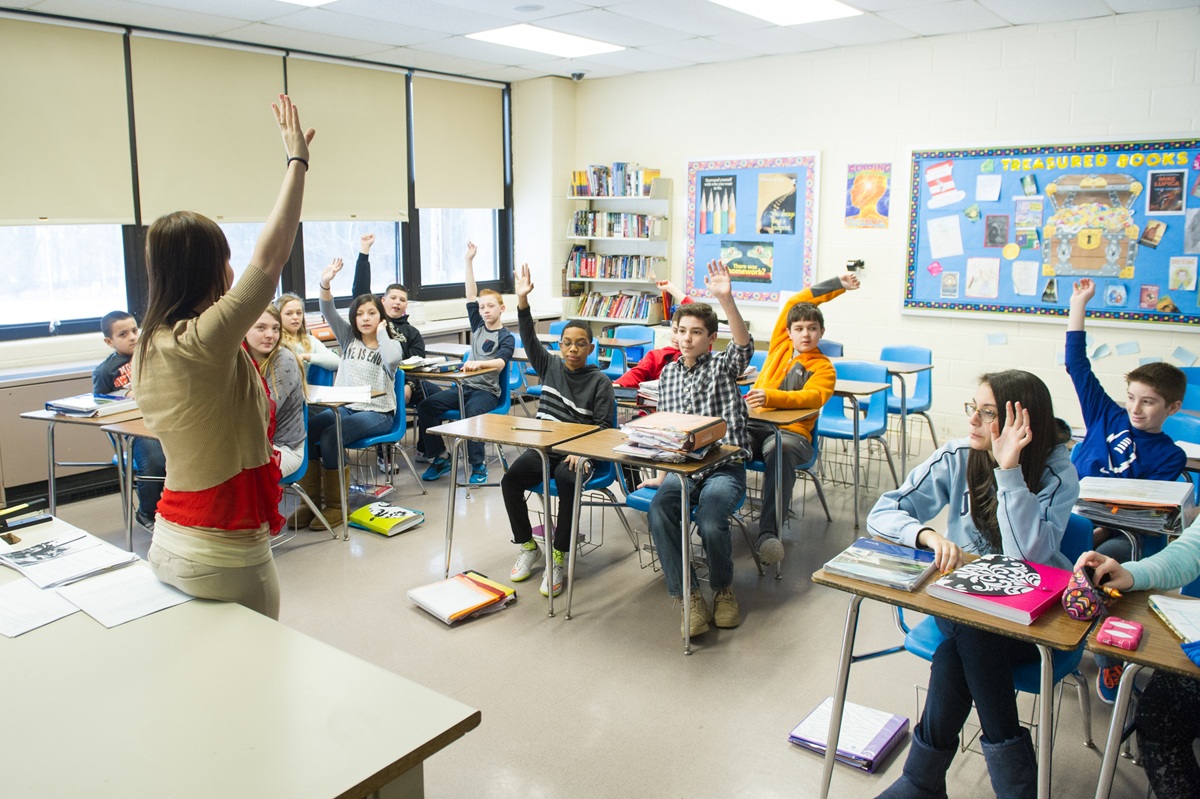Comprehensive Primary Science Tuition Singapore for Primary School Students
Comprehensive Primary Science Tuition Singapore for Primary School Students
Blog Article
A Comprehensive Guide to the Different Knowing Techniques in Primary Scientific Research Instruction
The expedition of varied understanding approaches in main scientific research direction presents an opportunity for educators to improve student involvement and comprehension considerably. By checking out hands-on knowing techniques, inquiry-based approaches, and joint methods, we can recognize reliable techniques that deal with different finding out styles. Furthermore, the combination of technology and separated guideline plays an essential role in promoting an inclusive setting. The concern continues to be: just how can these methods be properly carried out in the classroom to maximize their influence? The solution hinges on a more detailed evaluation of each approach and its effects for mentor scientific research.

Hands-On Discovering Techniques
Hands-on knowing strategies play a crucial role in key scientific research instruction, engaging pupils in energetic expedition and experimentation. These approaches permit learners to interact straight with phenomena and materials, promoting a deeper understanding of clinical principles. By utilizing manipulatives, models, and real-life experiments, instructors develop an atmosphere where students can observe, hypothesize, and examine their ideas.
Such methods not only enhance comprehension but additionally cultivate important reasoning and analytic abilities. When trainees join tasks like constructing easy devices, growing seeds, or performing chemical reactions, they are encouraged to ask questions and seek responses via their own observations. This experiential technique aids to debunk intricate scientific concepts, making them extra obtainable and relatable.
In addition, hands-on discovering promotes partnership amongst peers, as trainees commonly operate in teams to conduct experiments or share findings. This teamwork not only improves their knowing experience yet additionally develops necessary social skills. Eventually, integrating hands-on methods in main science instruction cultivates a lifelong love of knowing and interest concerning the environment, laying a strong structure for future academic searches in science and beyond.
Inquiry-Based Understanding
Inquiry-based understanding is an instructional strategy that encourages pupils to ask inquiries, examine sensations, and construct their very own understanding of scientific ideas. This technique changes the emphasis from traditional teacher-led direction to an extra student-centered experience, where students take the initiative in their educational journey. By promoting interest, inquiry-based understanding advertises deeper engagement with the material, allowing students to check out topics in a significant context.
In practice, this technique commonly includes hands-on experiments, observations, and crucial reasoning tasks that line up carefully with the scientific approach. Trainees are urged to develop theories, layout examinations, and analyze data, which grows important skills such as problem-solving and analytical thinking. The role of the educator in this structure is to facilitate expedition, guiding pupils via the query process while urging independent thought and collaboration.
Moreover, inquiry-based learning supports a sense of ownership over the understanding process, inspiring students to go after knowledge actively. This method not just improves understanding of scientific ideas yet additionally cultivates a lifelong love for understanding, equipping students with the abilities needed to navigate a significantly complex globe.
Collaborative Discovering Approaches
Collaborative discovering techniques empower students to participate in meaningful interactions with peers, cultivating a shared duty for their academic results. In primary science instruction, these approaches encourage learners to collaborate to check out clinical ideas, fix problems, and carry out experiments (primary science tuition Singapore). By taking part in group activities, students can utilize diverse perspectives, enabling richer understanding and retention of scientific expertise
One trick element of collaborative understanding is the focus on communication abilities. Pupils should articulate their ideas, pay attention proactively to others, and bargain ideas, all of which are critical proficiencies in both real-world and scholastic contexts. This social communication not just improves their understanding of clinical principles yet likewise advertises teamwork and dispute resolution skills.
When students see the worth of their payments within a group, they are a lot more most likely to take possession of their understanding journey. Generally, integrating joint knowing techniques in primary science instruction cultivates a dynamic learning atmosphere that prepares trainees for future academic and social obstacles.
Innovation Combination in Scientific Research
The combination of modern technology in key science direction boosts learning experiences by providing cutting-edge devices and sources that support numerous teaching methods, consisting of joint discovering - primary science tuition Singapore. Using electronic systems, simulations, and interactive applications permits trainees to involve deeply with scientific principles, assisting in a much more hands-on method to understanding
Virtual labs, for circumstances, enable learners to perform experiments safely and effectively, promoting inquiry-based understanding. These tools description can replicate real-world clinical scenarios, allowing trainees to envision complicated processes that would be tough to reproduce in a traditional classroom setup. Moreover, technology fosters interaction and partnership among pupils, as they can share searchings for and work together on tasks with on-line platforms.
Additionally, multimedia presentations and academic videos can enhance lessons by catering to varied discovering styles, making abstract ideas a lot more easily accessible. Data analysis devices additionally equip pupils to accumulate and interpret scientific information, reinforcing important believing abilities. In general, click to read the calculated consolidation of technology in key scientific research direction not only improves involvement yet also prepares trainees for a technically advanced society, outfitting them with vital abilities for future clinical endeavors.
Differentiated Direction Approaches
Set apart instruction approaches are vital for dealing with the varied demands of learners in key science education and learning. These methods allow teachers to customize their training techniques to accommodate varying abilities, passions, and discovering designs within the class. By employing separated guideline, teachers can create a comprehensive environment that fosters engagement and enhances understanding of clinical concepts.
One efficient strategy is to make use of versatile organizing, which enables students to work together with peers at comparable ability degrees or with differing viewpoints. This method encourages peer discovering and advertises important thinking. In addition, supplying options in assignments can equip students, enabling them to select jobs that reverberate with their rate of interests while still fulfilling curricular goals.
In addition, incorporating tiered tasks is one more beneficial strategy. By making jobs with varying levels of complexity, teachers can guarantee that all students are suitably tested, no matter of their proficiency. Making use of formative assessments to determine recognizing additional allows educators to readjust their training techniques dynamically, ensuring that each learner receives the support they require.
Inevitably, applying separated instruction strategies in key science education not just enhances trainee discovering outcomes yet additionally grows an interest for scientific next page research, preparing trainees for future scholastic pursuits.

Final Thought
In recap, effective key scientific research direction demands a diverse technique that incorporates hands-on learning, inquiry-based methods, and collective techniques. The combination of modern technology and differentiated guideline further provides to diverse knowing designs, cultivating an atmosphere for exploration and crucial reasoning. By implementing these strategies, instructors can boost trainee interaction and understanding, eventually supporting a long-lasting enthusiasm for scientific research and inquiry. Such thorough approaches are crucial for creating informed and interested future scientists.
The exploration of diverse knowing methods in key scientific research instruction offers a possibility for instructors to improve pupil engagement and understanding dramatically.Hands-on discovering strategies play an essential role in key science guideline, engaging pupils in energetic expedition and experimentation.Inquiry-based understanding is an instructional technique that motivates students to ask concerns, explore sensations, and create their very own understanding of clinical principles.Joint discovering techniques encourage students to engage in purposeful communications with peers, promoting a shared responsibility for their instructional end results. Overall, integrating joint knowing methods in primary scientific research instruction cultivates a vibrant learning setting that prepares pupils for future academic and social difficulties.
Report this page